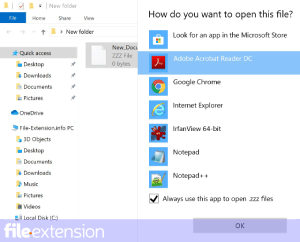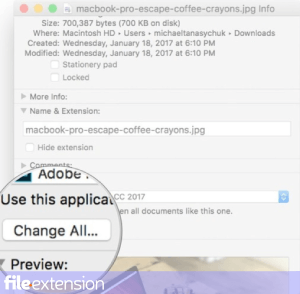
TERMINAL File Extension
Terminal Settings Format
-
DeveloperApple
-
Category
-
Popularity4.5 (2 votes)
What is TERMINAL file?
TERMINAL is a file extension commonly associated with Terminal Settings Format files. Terminal Settings Format specification was created by Apple. TERMINAL file format is compatible with software that can be installed on Mac OS system platform. TERMINAL file belongs to the Settings Files category just like 1305 other filename extensions listed in our database. Users are advised to use Apple Terminal software for managing TERMINAL files, although 1 other programs can also handle this type of file.
Programs which support TERMINAL file extension
Programs that can handle TERMINAL files are as follows. TERMINAL files can be encountered on all system platforms, including mobile, yet there is no guarantee each will properly support such files.
How to open file with TERMINAL extension?
Problems with accessing TERMINAL may be due to various reasons. On the bright side, the most encountered issues pertaining to Terminal Settings Format files aren’t complex. In most cases they can be addressed swiftly and effectively without assistance from a specialist. The following is a list of guidelines that will help you identify and solve file-related problems.
Step 1. Install Apple Terminal software
 The main and most frequent cause precluding users form opening TERMINAL files is that no program that can handle TERMINAL files is installed on user’s system. This issue can be addressed by downloading and installing Apple Terminal or different compatible program, such as Mac OS X. The full list of programs grouped by operating systems can be found above. The safest method of downloading Apple Terminal installed is by going to developer’s website () and downloading the software using provided links.
The main and most frequent cause precluding users form opening TERMINAL files is that no program that can handle TERMINAL files is installed on user’s system. This issue can be addressed by downloading and installing Apple Terminal or different compatible program, such as Mac OS X. The full list of programs grouped by operating systems can be found above. The safest method of downloading Apple Terminal installed is by going to developer’s website () and downloading the software using provided links.
Step 2. Check the version of Apple Terminal and update if needed
 You still cannot access TERMINAL files although Apple Terminal is installed on your system? Make sure that the software is up to date. It may also happen that software creators by updating their applications add compatibility with other, newer file formats. The reason that Apple Terminal cannot handle files with TERMINAL may be that the software is outdated. The latest version of Apple Terminal should support all file formats that where compatible with older versions of the software.
You still cannot access TERMINAL files although Apple Terminal is installed on your system? Make sure that the software is up to date. It may also happen that software creators by updating their applications add compatibility with other, newer file formats. The reason that Apple Terminal cannot handle files with TERMINAL may be that the software is outdated. The latest version of Apple Terminal should support all file formats that where compatible with older versions of the software.
Step 3. Set the default application to open TERMINAL files to Apple Terminal
If the issue has not been solved in the previous step, you should associate TERMINAL files with latest version of Apple Terminal you have installed on your device. The next step should pose no problems. The procedure is straightforward and largely system-independent

The procedure to change the default program in Windows
- Clicking the TERMINAL with right mouse button will bring a menu from which you should select the option
- Select
- The last step is to select option supply the directory path to the folder where Apple Terminal is installed. Now all that is left is to confirm your choice by selecting Always use this app to open TERMINAL files and clicking .

The procedure to change the default program in Mac OS
- By clicking right mouse button on the selected TERMINAL file open the file menu and choose
- Open the section by clicking its name
- Select the appropriate software and save your settings by clicking
- A message window should appear informing that This change will be applied to all files with TERMINAL extension. By clicking you confirm your selection.
Step 4. Verify that the TERMINAL is not faulty
Should the problem still occur after following steps 1-3, check if the TERMINAL file is valid. Problems with opening the file may arise due to various reasons.

1. Verify that the TERMINAL in question is not infected with a computer virus
If the TERMINAL is indeed infected, it is possible that the malware is blocking it from opening. Scan the TERMINAL file as well as your computer for malware or viruses. If the TERMINAL file is indeed infected follow the instructions below.
2. Check whether the file is corrupted or damaged
If the TERMINAL file was sent to you by someone else, ask this person to resend the file to you. It is possible that the file has not been properly copied to a data storage and is incomplete and therefore cannot be opened. When downloading the file with TERMINAL extension from the internet an error may occurred resulting in incomplete file. Try downloading the file again.
3. Verify whether your account has administrative rights
There is a possibility that the file in question can only be accessed by users with sufficient system privileges. Log out of your current account and log in to an account with sufficient access privileges. Then open the Terminal Settings Format file.
4. Make sure that the system has sufficient resources to run Apple Terminal
The operating systems may note enough free resources to run the application that support TERMINAL files. Close all running programs and try opening the TERMINAL file.
5. Verify that your operating system and drivers are up to date
Latest versions of programs and drivers may help you solve problems with Terminal Settings Format files and ensure security of your device and operating system. It is possible that one of the available system or driver updates may solve the problems with TERMINAL files affecting older versions of given software.
Do you want to help?
If you have additional information about the TERMINAL file, we will be grateful if you share it with our users. To do this, use the form here and send us your information on TERMINAL file.

 MAC OS
MAC OS 

